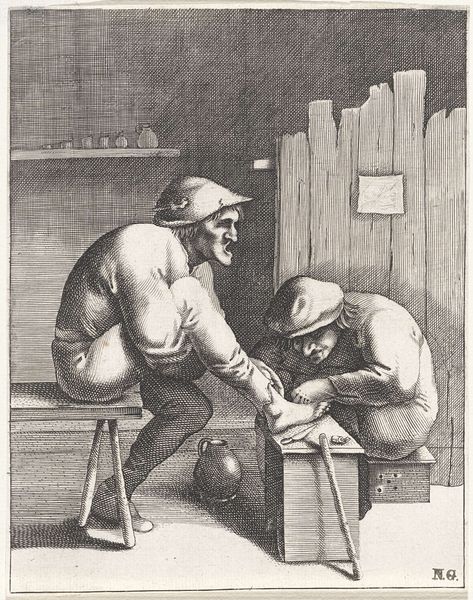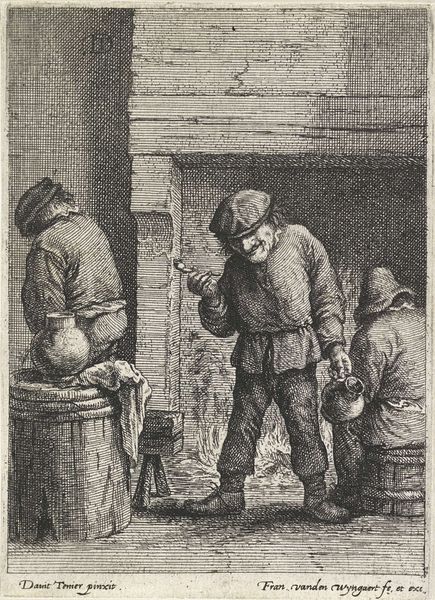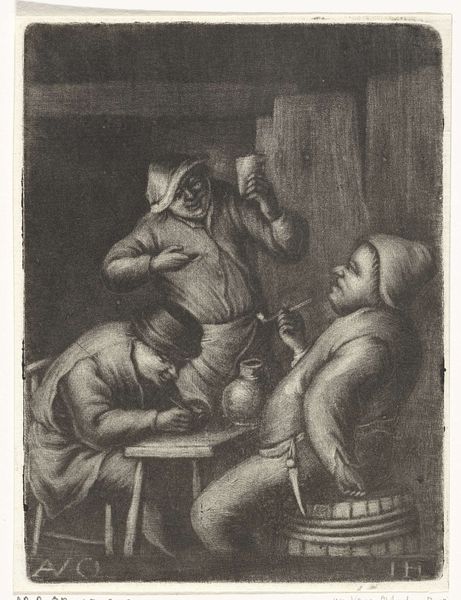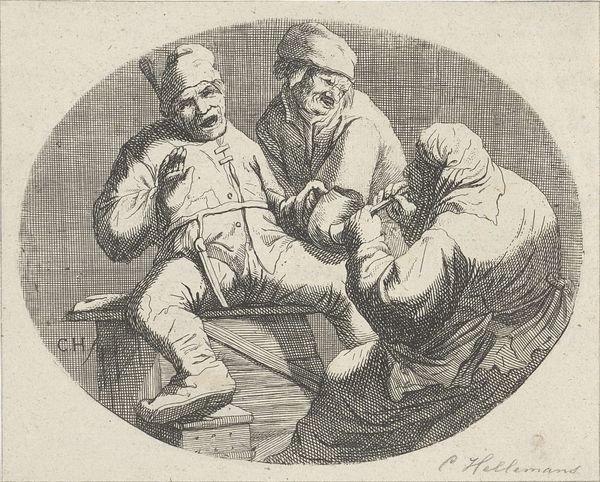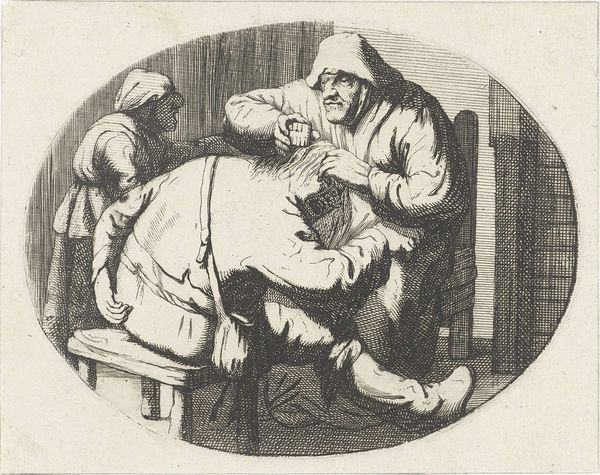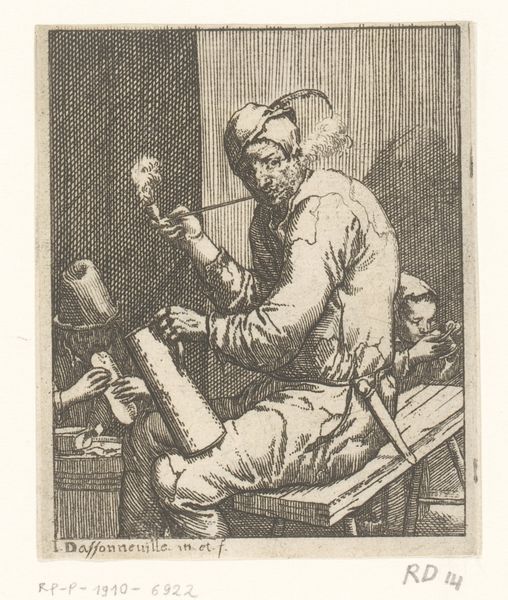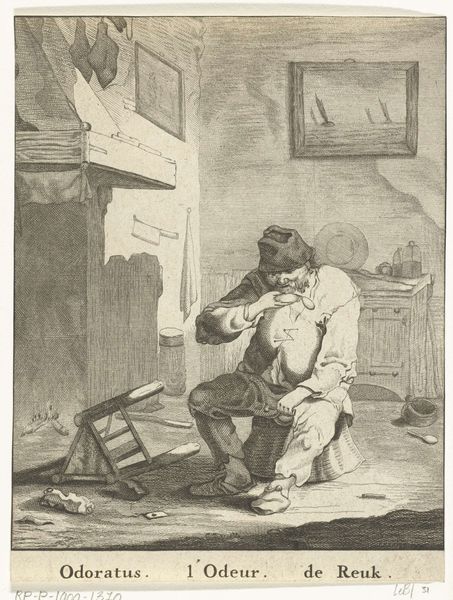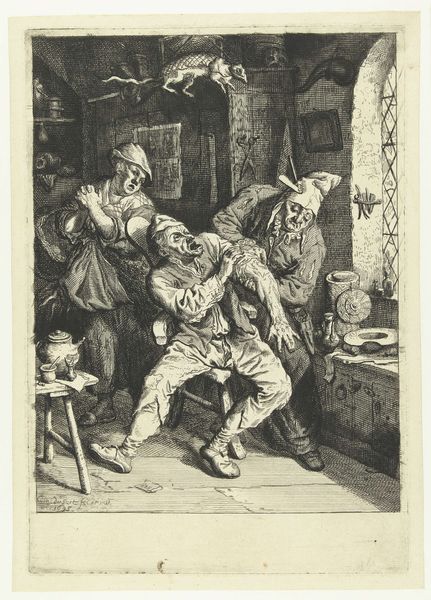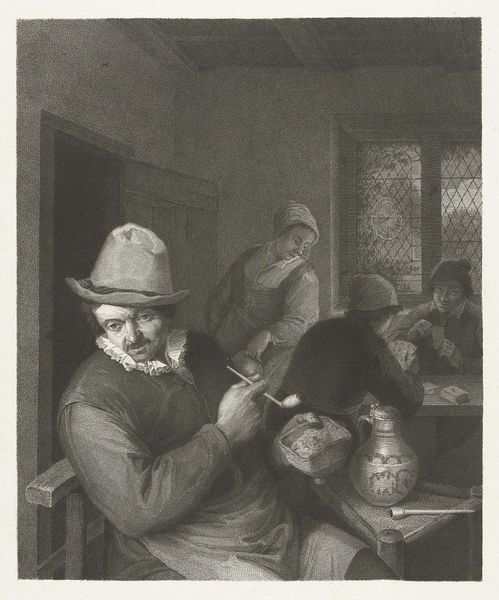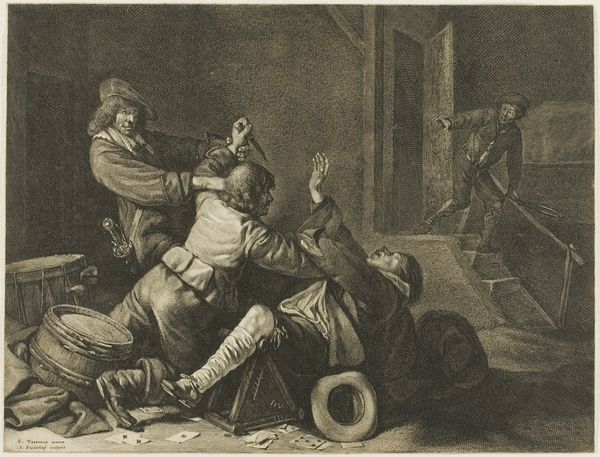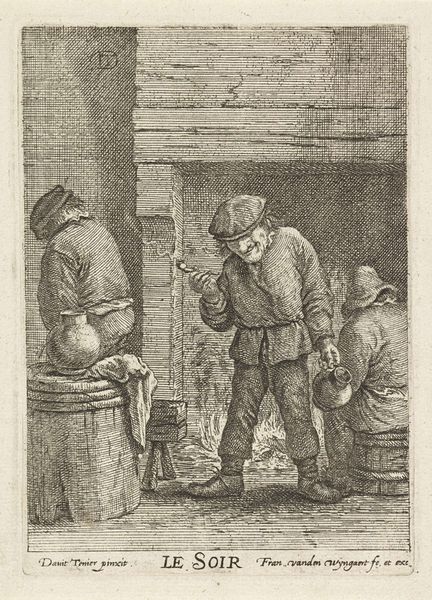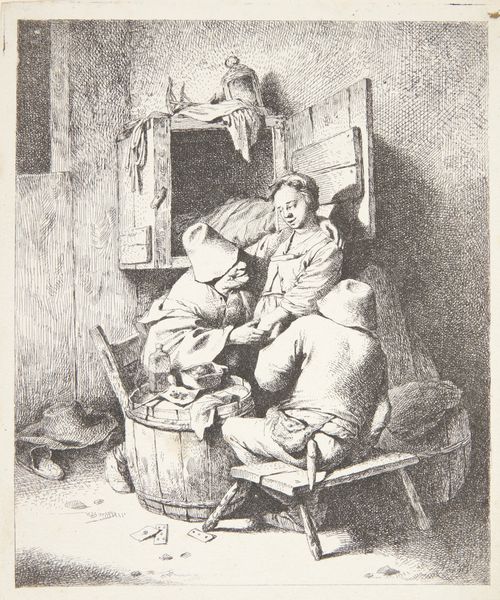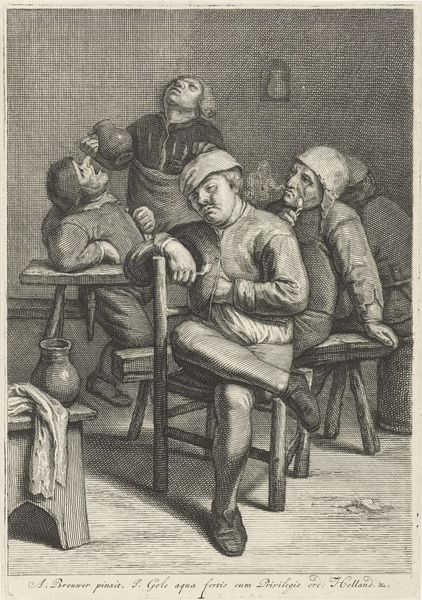
print, etching
#
portrait
#
narrative-art
#
baroque
# print
#
etching
#
figuration
#
genre-painting
Dimensions: height 194 mm, width 139 mm
Copyright: Rijks Museum: Open Domain
Curator: This etching, titled "Rokende man, met achter zich een vrouw," or "Smoking man, with a woman behind him," comes to us from the Baroque period, around 1645. It is etched by D. van den Bremden after a design by Adriaen Brouwer. What are your initial thoughts? Editor: The overwhelming feeling is… oppressive. The figures seem crammed into this smoky interior, almost suffocated. The composition has an unrefined feel, a darkness punctuated by the few visible details of daily life in 17th century. Curator: Look at how van den Bremden has rendered the textures – the rough cloth of their garments, the sheen on the jug. He’s highlighting not just the act of smoking, but the material reality of these figures' lives. Consider the cost of tobacco. The clay pipes. The economics and labor required to enable this indulgence. Editor: The smoking itself takes on a symbolic dimension. In a time when many new world materials are arriving in Europe and becoming status symbols, smoking wasn't just a casual act but a form of partaking in global trade, of showing oneself as someone connected to something larger and exotic. But the smoke is so heavy. It suggests a sense of moral haziness or uncertainty. Also note the Dutch text in the plate's inscription, indicating a commentary on manners perhaps, the figure seems anything but elevated or moral. Curator: Exactly! The very means of producing the etching is tied to this broader cultural landscape, involving artisanal skill but made more widely available through this medium. The Baroque wasn’t only about grandiose pronouncements, but increasingly depicted every day human subjects for a broader audience, produced using innovative intaglio technologies. Editor: And let’s not forget the figure lurking in the background and preparing, possibly lighting the tobacco, or adding to it. There's a definite sense of dependence or addiction, almost like they are feeding the smoker's habit. Is the smoker offering communion to this vice or some other more worldly association? Is there commentary intended by that text inscribed? I would be keen to see a translation of this verse that accompanied the original. Curator: Considering that there may be multiple actors to bring this print to light – Brouwer and Bremden – that makes this an excellent work from the early days of printmaking; here a painter partners with a reproductive specialist. An artist contracts someone to bring their invention to light and disseminate the design! This has far-reaching impacts in material culture across Europe. Editor: Looking more deeply at its symbolism gives such a richer understanding of that 17th century world, whereas noting it as simply Baroque really gives such an over generalized view. Curator: Agreed! Recognizing how that world was rendered physically accessible is critical to see how these symbolic economies were born and dispersed in everyday material life.
Comments
No comments
Be the first to comment and join the conversation on the ultimate creative platform.
